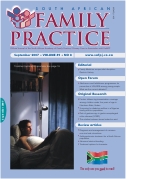Immunisation coverage among under-five Sudanese children
Keywords:
Immunization, vaccination rates, children, determinants, Sudan.
Abstract
Objectives: This article explores the hypothesis that predisposing and enabling factors of households influence the vaccination status of their children under five years of age in Khartoum State of Sudan. Design and participants: The study was a cross-sectional survey among a representative sample of 410 males and females children under five years of age from both urban and rural localities in the state with varying socio-economic status of their households and educational levels of their mothers. Results: The correct vaccination coverage rate for children was found to be high. Children in urban and rural areas differed substantially in their correct vaccination rates and their receipt of each vaccine separately. Walking or travelling time to the place of vaccination was found to be longer in rural areas when compared with urban areas. The vaccination rate increased with an increase in the age of the children and the education level of the mother. Children of older mothers were more likely to have had the correct vaccinations. The mothers’ knowledge of and attitudes to vaccination showed a strong relationship with the vaccination status of their children. When the coverage rate for each vaccine was taken separately, the economic level of the households significantly affected only the BCG vaccine coverage. Most vaccinations occurred in public outlet agencies. Conclusion: The large differences found in vaccination coverage by place of residence and level of mother’s education suggest that much greater efforts on the part of the government are required if better rates of correct vaccination are to be achieved in rural areas.
Published
2007-09-04
Section
Original Research
By submitting manuscripts to SAFP, authors of original articles are assigning copyright to the South African Academy of Family Physicians. Copyright of review articles are assigned to the Publisher, Medpharm Publications (Pty) Ltd, unless otherwise specified. Authors may use their own work after publication without written permission, provided they acknowledge the original source. Individuals and academic institutions may freely copy and distribute articles published in SAFP for educational and research purposes without obtaining permission.

